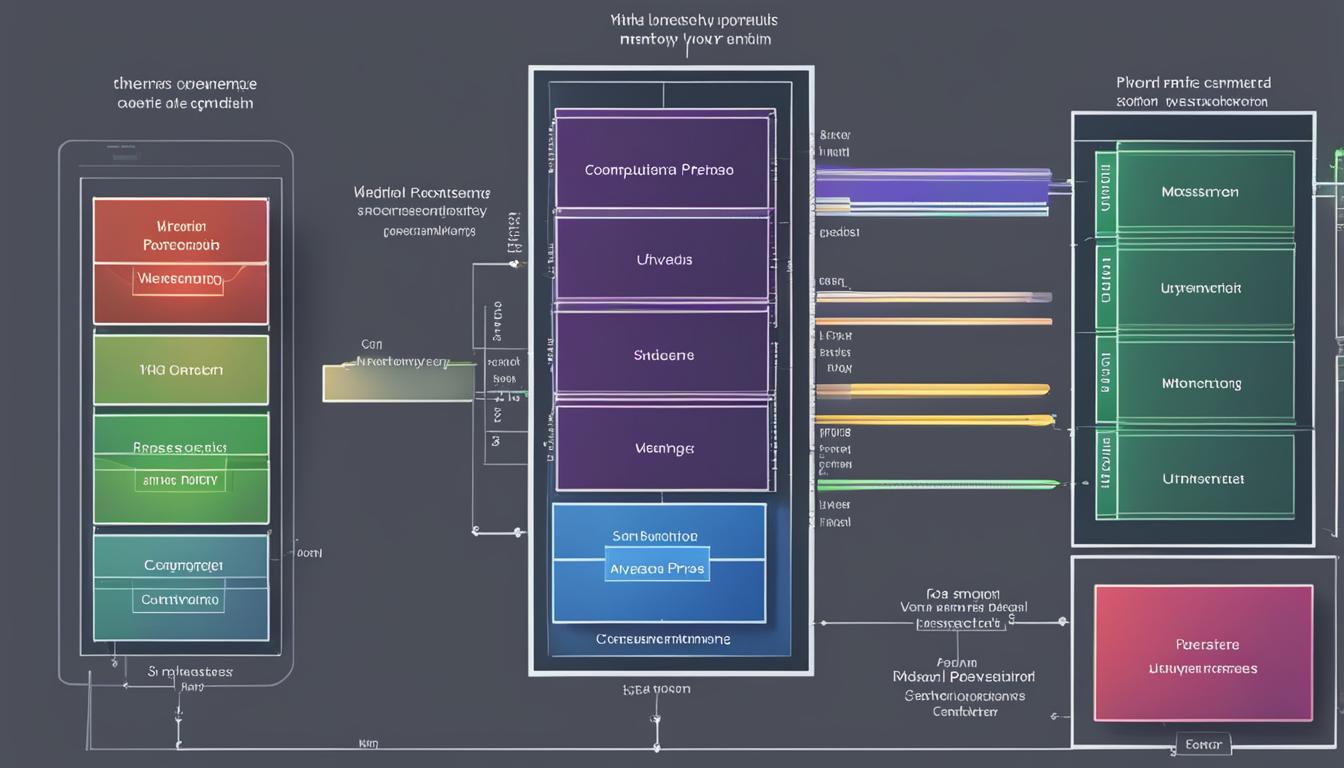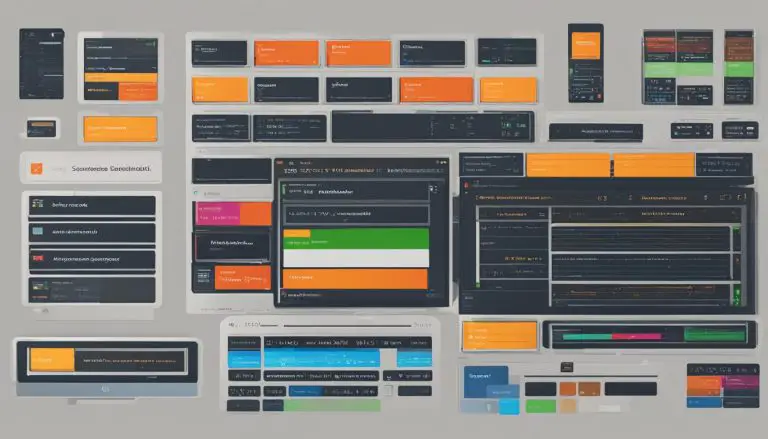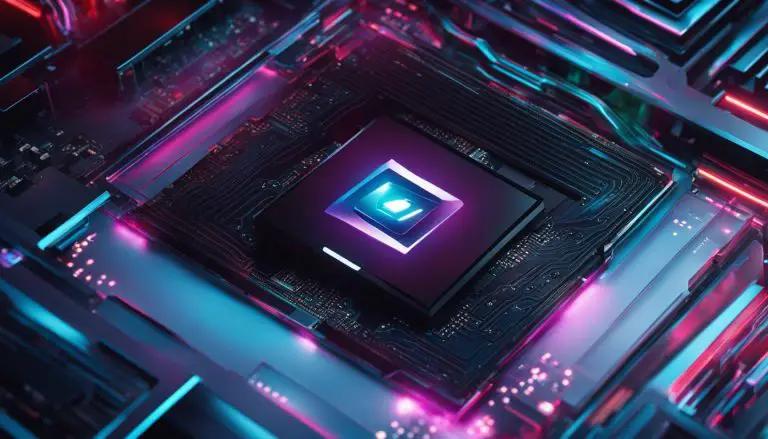Understanding What is Virtual Memory: A Comprehensive Guide
Are you curious about virtual memory and its role in computer systems? If so, you’ve come to the right place. In this comprehensive guide, I will explain what virtual memory is, its definition, its importance in computers, and how it works.
Virtual memory plays a crucial role in allowing systems to handle larger applications or multiple applications simultaneously without running out of RAM. It achieves this by combining physical RAM with additional virtual RAM, expanding the system’s total memory resources.
Now you might be wondering, how does virtual memory work exactly? Virtual memory operates by utilizing a portion of a computer system’s secondary storage, such as a hard drive or SSD, as an extension of the primary memory (RAM). When the RAM becomes full while running large applications, data that is not actively used is temporarily moved to the virtual memory. This frees up space in the RAM for immediate access to the data the system currently needs.
So, what are the advantages and disadvantages of virtual memory? On one hand, virtual memory allows more applications to run simultaneously, enables larger applications to run on systems with limited physical RAM, and extends the lifespan of the hardware by increasing memory capacity. On the other hand, virtual memory may result in slower performance compared to physical RAM, consumes storage space, and relies on efficient paging algorithms for optimal performance.
It’s also important to understand the difference between virtual memory and physical memory (RAM). While virtual memory serves as an extension of physical memory, physical memory refers to the actual RAM installed in the computer’s motherboard. Virtual memory enables the system to handle larger data loads and run more applications simultaneously, while physical memory provides faster access to data.
There are two types of virtual memory management systems: paging and segmentation. In a paging system, RAM is divided into fixed-size blocks called pages, while segmentation allocates memory based on variable-length segments. These methods can also be combined in a hybrid memory management system.
Understanding virtual memory can be challenging, but its benefits are worth exploring. By effectively managing virtual memory usage, IT teams can optimize system performance and ensure smooth operation.
Key Takeaways:
- Virtual memory combines physical RAM with additional virtual memory to expand a system’s memory resources.
- It works by utilizing a portion of the secondary storage as an extension of the primary memory.
- Virtual memory enables more applications to run simultaneously, handles larger applications, and extends hardware lifespan.
- However, it may result in slower performance, consumes storage space, and relies on efficient paging algorithms.
- Virtual memory acts as an extension of physical memory to handle larger data loads and run more applications simultaneously.
How Virtual Memory Works
Virtual memory is a crucial component of modern computer systems that allows them to overcome physical memory limitations and efficiently manage memory resources. It functions by utilizing a portion of the computer’s secondary storage, such as a hard drive or SSD, to create an extension of the system’s primary memory (RAM). This extension is known as virtual memory and works in tandem with the physical RAM to provide the necessary memory capacity for running multiple applications or large applications simultaneously.
The process of virtual memory management involves the use of algorithms to determine which data should be stored in the RAM and which should be moved to the virtual memory. When the RAM becomes full or when a particular data is not actively being used, it is temporarily transferred to the virtual memory. This swapping process allows the system to free up space in the RAM for immediate access to the data it needs, ensuring efficient utilization of memory resources.
Virtual memory operates through a combination of hardware and software components. The hardware consists of the memory management unit (MMU), which handles virtual memory addressing and translation, and the secondary storage devices where the virtual memory is stored. The software includes the operating system, which manages the virtual memory allocation and data swapping, and the virtual memory management algorithms that determine the most efficient way to allocate and swap data between the RAM and virtual memory.
Overall, virtual memory is a complex but essential mechanism that allows computer systems to effectively handle large memory requirements and run multiple applications simultaneously. By utilizing both physical RAM and virtual memory, systems can optimize memory usage and ensure smooth operation even in situations where the available physical memory is limited.
Advantages of Virtual Memory
Virtual memory offers several advantages for computer systems. Firstly, it allows more applications to run simultaneously on the same system, enabling better multitasking capabilities. With virtual memory, a system can allocate a portion of the secondary storage device, such as a hard drive or SSD, to act as additional memory space. This means that even if the physical RAM becomes full, the system can still execute multiple applications concurrently by temporarily moving unused data to the virtual memory. This approach significantly improves system performance and user experience.
Another advantage of virtual memory is that it enables larger applications to run on systems with limited physical RAM. By utilizing the additional virtual memory space, businesses can run resource-intensive applications without having to invest in costly RAM upgrades. This not only saves money but also extends the lifespan of the existing hardware.
Furthermore, virtual memory provides a more cost-effective solution compared to purchasing additional RAM modules. Instead of investing in expensive physical RAM, virtual memory allows systems to make efficient use of the available resources by dynamically managing the allocation of memory. This flexibility makes virtual memory an attractive option for organizations with budget constraints.
Table: Advantages of Virtual Memory
| Advantages | Description |
|---|---|
| Improved multitasking | Allows more applications to run simultaneously, enhancing productivity |
| Enables larger applications | Allows resource-intensive applications to run on systems with limited physical RAM |
| Cost-effective | Provides memory expansion without the need for expensive RAM upgrades |
| Extends hardware lifespan | Increases memory capacity, prolonging the usability of existing systems |
In summary, virtual memory offers significant advantages for computer systems, including improved multitasking capabilities, the ability to run larger applications, cost-effective memory expansion, and extended hardware lifespan. By leveraging virtual memory management techniques, organizations can optimize their system performance and maximize the efficiency of their existing resources.
Disadvantages of Virtual Memory
While virtual memory offers various benefits, it is important to acknowledge its limitations and drawbacks. Understanding these disadvantages can help IT teams make informed decisions regarding memory management strategies.
One of the primary disadvantages of virtual memory is the performance impact it can have on a system. Accessing data from virtual memory is generally slower than accessing data directly from physical RAM. When the system frequently swaps data between RAM and virtual memory, it can result in overall system slowdowns and decreased efficiency.
Virtual memory also consumes storage space on the hard drive or SSD. This means that the available space for long-term data storage is reduced. For systems with limited storage capacity, this can become a concern as it may limit the ability to store other important files and data.
“Virtual memory, while providing a cost-effective solution for expanding memory capacity, relies on efficient paging algorithms to manage data swapping. Inefficient paging strategies can lead to suboptimal performance, as the system may struggle to efficiently prioritize and allocate memory resources.”
Despite these disadvantages, virtual memory remains a valuable technology for managing memory resources. By understanding its limitations and employing efficient memory management techniques, IT professionals can optimize system performance and ensure smooth operation.
Table: Comparison of Virtual Memory and Physical Memory
| Aspect | Virtual Memory | Physical Memory |
|---|---|---|
| Usage | Simulates additional memory space by utilizing secondary storage | Actual physical RAM installed in the computer |
| Access Speed | Slower compared to accessing data from physical RAM | Faster access to data |
| Performance | May lead to system slowdowns when excessive swapping occurs | Higher performance, limited by physical capacity |
| Storage Space | Occupies storage space on the hard drive or SSD | N/A |
Virtual Memory vs. Physical Memory
Virtual memory and physical memory (RAM) play distinct roles in a computer system, each contributing to its overall performance and functionality. While they serve different purposes, virtual memory and physical memory work together to ensure efficient memory management.
Virtual memory is a form of logical memory that expands the system’s memory capacity beyond the limitations of physical RAM. It achieves this by utilizing secondary storage, such as a hard drive or SSD, to simulate additional memory space. Virtual memory allows the system to address more memory than is physically available, enabling it to handle larger data loads and run multiple applications simultaneously.
On the other hand, physical memory refers to the actual RAM installed in the computer’s motherboard. It provides faster access to data and plays a crucial role in the system’s performance. Physical memory directly interacts with the CPU and stores the data that the system is currently processing. It is limited by its physical capacity, determining the maximum amount of memory that can be accessed at any given time.
“Virtual memory acts as an extension of physical memory, enabling the system to handle larger data loads and run more applications simultaneously.”
In summary, virtual memory and physical memory complement each other in a computer system, with virtual memory expanding the memory capacity and physical memory providing faster access to data. Understanding the differences and interactions between these two types of memory is essential for optimizing system performance and ensuring smooth operation.

Two Types of Virtual Memory
Virtual memory management systems utilize two types of virtual memory methods: paging and segmentation. Each method offers distinct advantages and is employed based on specific memory requirements.
Paging
In a paging system, RAM is divided into fixed-size blocks called pages, and processes are allocated the necessary number of pages based on their memory requirements. The operating system keeps track of the pages allocated to each process and manages the swapping of data between RAM and virtual memory as needed. This allows for efficient memory allocation and utilization, as only the required pages are loaded into RAM.
Segmentation
Segmentation, on the other hand, allocates memory based on variable-length segments to meet process requirements. Each segment corresponds to a logical unit, such as a function or data structure, and can be independently allocated and deallocated. This provides flexibility and improved sharing between applications, as different processes can share segments of memory. However, segmentation can lead to memory fragmentation, where free memory becomes scattered across the system, potentially decreasing overall memory efficiency.
Both paging and segmentation can be combined in a hybrid memory management system, offering the benefits of both methods. This hybrid approach aims to optimize memory utilization while minimizing fragmentation, providing a more efficient virtual memory system.
Example of Virtual Memory Usage
An example of virtual memory usage can be seen in the operations of an IT manager using a computer running macOS. The system has limited RAM capacity but needs to efficiently run multiple applications simultaneously, including resource-intensive software like remote monitoring and management tools. In this scenario, the memory management unit of the computer’s operating system makes use of virtual memory to store and access data from the secondary storage device, such as a hard drive or SSD. By utilizing virtual memory, the system can effectively address memory limitations and handle the demands of running multiple applications.
One practical application of virtual memory usage is the smooth operation of a virtual machine. When running a virtual machine on a computer with limited physical memory, virtual memory is crucial in providing the necessary memory resources for the virtual environment. By utilizing virtual memory, the virtual machine can access the required data from the secondary storage device, facilitating the smooth execution of tasks and preventing system crashes.
Another example of virtual memory usage is in the operation of web browsers. Web browsers often consume a significant amount of memory, especially when users have multiple tabs open simultaneously. Virtual memory comes into play by allowing the browser to allocate additional memory space when the RAM reaches its capacity. This ensures that users can continue to browse the internet without experiencing significant slowdowns or crashes.
| Example of Virtual Memory Usage |
|---|
| Running multiple applications simultaneously on a system with limited RAM capacity |
| Facilitating the smooth operation of virtual machines |
| Providing additional memory resources for web browsers with multiple tabs |
Conclusion
In conclusion, virtual memory is a crucial technology that allows computer systems to efficiently manage memory resources and handle complex applications. It offers several advantages, such as improved multitasking capabilities, the ability to run larger applications, and cost-effective memory expansion. By combining physical RAM with additional virtual RAM, virtual memory extends the system’s memory capacity and increases the lifespan of hardware. This makes it possible for businesses to run resource-intensive applications without the need for costly RAM upgrades.
However, virtual memory also has its limitations. Accessing data from virtual memory is slower compared to physical RAM, which can result in system slowdowns during extensive swapping. Moreover, virtual memory consumes storage space on the hard drive or SSD, reducing the available space for long-term data storage. Efficient management of virtual memory usage is crucial to optimize system performance and ensure smooth operation.
Overall, virtual memory is a critical component of modern computer systems. By understanding its inner workings and effectively managing its usage, IT teams can maximize system performance and productivity. Whether it’s running multiple applications simultaneously or handling large data loads, virtual memory plays a vital role in enabling systems to meet the demands of today’s computing requirements.
FAQ
What is virtual memory?
Virtual memory is a technology that allows a system to run larger applications or multiple applications simultaneously without running out of RAM.
How does virtual memory work?
Virtual memory works by utilizing an area of a computer system’s secondary storage, such as a hard drive or SSD, as an extension of the system’s primary memory (RAM).
What are the advantages of virtual memory?
Virtual memory allows more applications to run simultaneously, enables larger applications to run on systems with limited physical RAM, and extends the lifespan of hardware by increasing memory capacity.
What are the disadvantages of virtual memory?
Virtual memory can result in slower performance compared to physical RAM, consumes storage space on the hard drive or SSD, and relies on efficient paging algorithms for optimal performance.
What is the difference between virtual memory and physical memory?
Virtual memory is a form of logical memory that allows the system to address more memory than is physically available, while physical memory refers to the actual RAM installed in the computer’s motherboard.
What are the two types of virtual memory?
The two types of virtual memory are paging and segmentation, which can also be combined in a hybrid memory management system.
Can you provide an example of virtual memory usage?
An example of virtual memory usage is when a computer with limited RAM needs to run multiple applications simultaneously, and the system utilizes virtual memory to store and access data from secondary storage.
- About the Author
- Latest Posts
Claudia Rothenhorst ist Medien- und Reise-Redakteurin bei der Web-Redaktion. In ihrer Freizeit reist sie gerne und schreibt darüber unter anderem auf Reisemagazin.biz.
Weitere Artikel von Ihr erscheinen u.a. im Blog der Webagentur Awantego.






